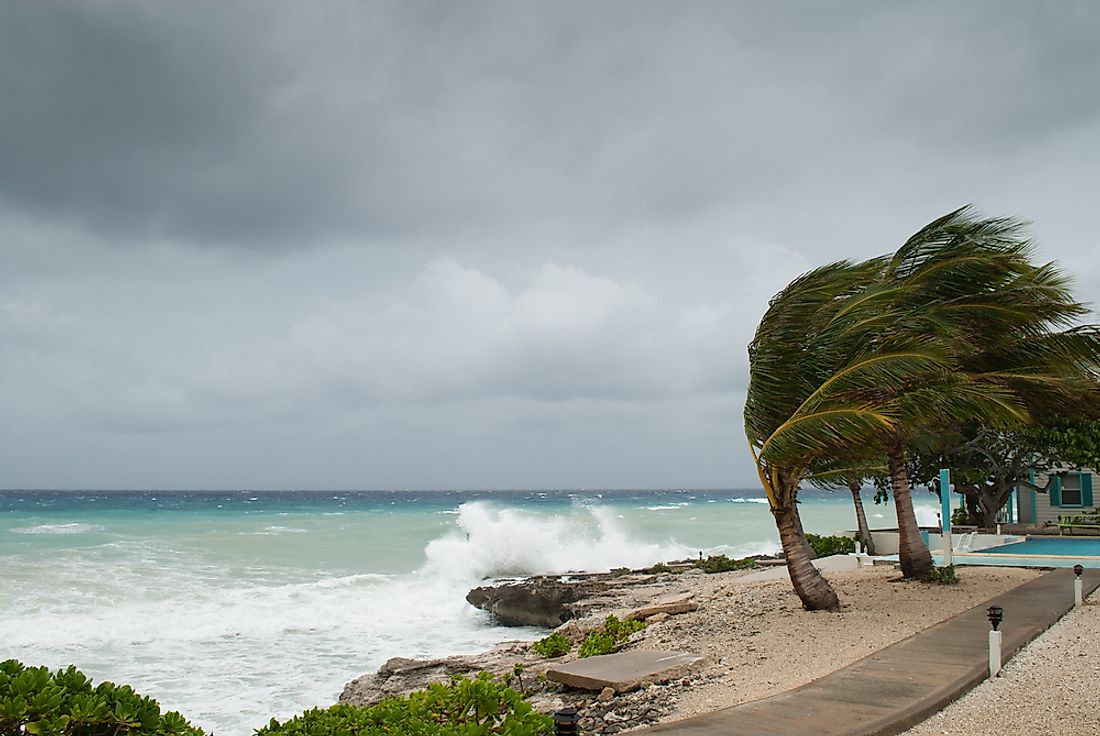Has The World Ever Experienced A Category 6 Hurricane?

Established in the early 1970s, the Saffir-Simpson hurricane wind scale is used to categorize hurricanes based on the strength of the storm’s winds. Developed by Robert Simpson and Herbert Saffir, the scale classifies hurricanes into five categories with a category one storm referring to a hurricane with average wind speeds of 74 to 95 miles per hour all the way up to a category five in which winds can reach more than 157 miles per hour. The Saffir-Simpson scale serves as an important tool for predicting storm damage caused by flooding etc.
To date in the Atlantic, 33 category five hurricanes have been reported and of those storms only seven were recorded with wind speeds of over 180 miles an hour. In the Pacific there have been sixteen category five hurricanes of which three were clocked with winds exceeding 180 miles per hour.
Category 5 Hurricanes
Among the deadliest hurricanes to hit the Atlantic region was the 1935 Labor Day Hurricane which featured sustained winds of 185 mph and was responsible for the deaths of 423 people. This destructive storm affected the eastern coast of the U.S. states from Florida north up to Delaware. Another category 5 hurricane, Allen, occurred in 1981 and included winds of 190 mph. This storm’s wrath was felt in the Caribbean before moving on to parts of Mexico and southern regions of Texas. Hurricane Allen was reportedly responsible for 269 fatalities.
Hurricane Gilbert took shape during the 1988 hurricane season and effected areas as far south as Puerto Rico and Haiti and as far north as the Midwestern U.S. and western portions of Canada. Aside from causing about three billion dollars in property damage the death toll for Gilbert totaled 318 lives. Hurricane Mitch took place in the fall of 1998 and inflicted major damage to areas of Central America as well as Florida before heading north across the Atlantic Ocean in the form of an extratropical cyclone and causing damage to Ireland and parts of the United Kingdom.
Hurricane Rita formed in September 2005 and reached wind speeds of 180 mph. This deadly category five storm traveled through the Caribbean and then northward, thus effecting an array of countries including the Bahamas, Cuba, the U.S., and Canada. Hurricane Wilma occurred in October 2005 and caused significant damage as it made its way from Jamaica all the way up the eastern U.S. coast to Canada’s Maritime Provinces. 2017’s Hurricane Irma struck the Leeward Island before moving northward to the U.S. on Florida.
Category 6?
Because the Saffir-Simpson hurricane wind scale is made up of only five categories, technically, it’s impossible for the world to have experienced a category six hurricane. In recent years, however, many weather experts have made a case for a new category to be added to the existing scale. This movement has largely been driven by the recent number of high powered and particularly destructive hurricanes which have hit the Atlantic area over the past several years.
Scientists believe that due to changing weather patterns and ongoing global climate change a new category of hurricane must be added but this new classification can only be implemented by the National Hurricane Center. As ocean water temperatures continue to rise, weather experts believe that three major areas might become particularly vulnerable to experiencing category six hurricanes in the coming years. These regions include the Persian Gulf, Tampa (Florida), and Cairns (Australia).











